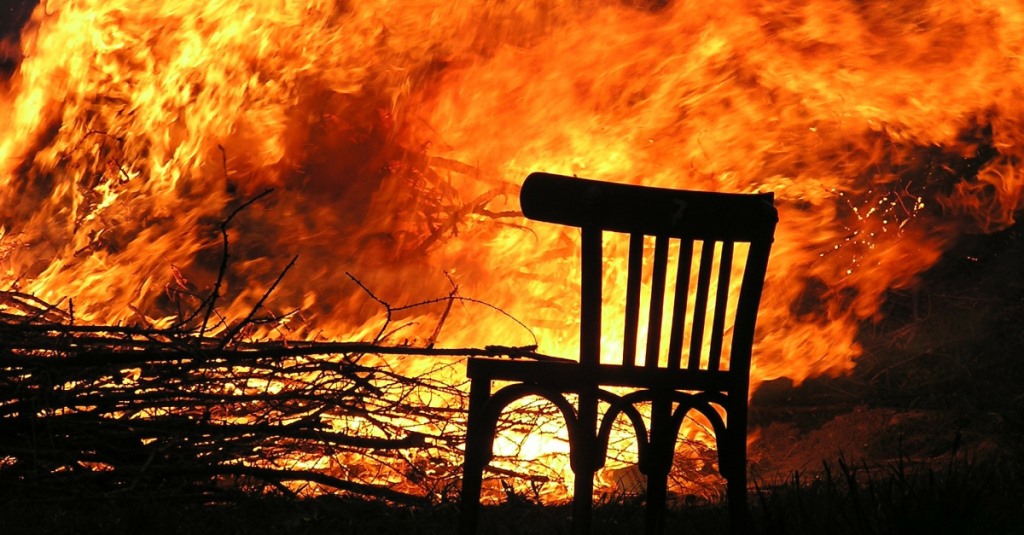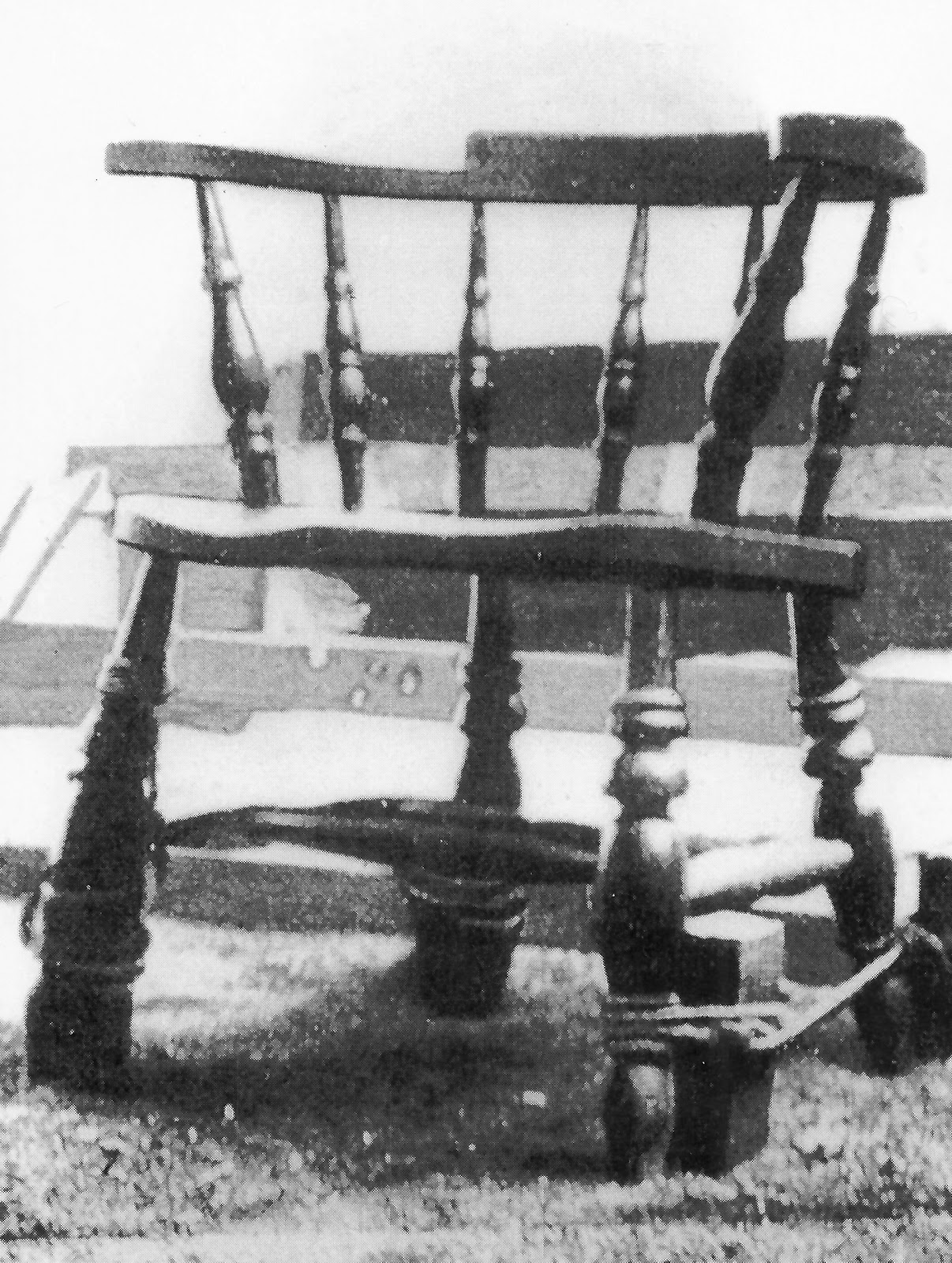Josef Jakobs was seated in a chair for his execution by firing squad at the Tower of London. The use of a chair for his execution has been variously explained:
(1) Jakobs had broken his ankle during his landing and was unable to stand, therefore he was seated in a chair.
(2) Jakobs was to be hanged, but could not stand due to his broken ankle, therefore seated in a chair and shot.
Neither scenario is accurate.

Jakobs was able to walk to his execution as evidenced by an eye witness account recorded in the book The Prison Governor by Major Benjamin Dixon Grew. As the Governor of Wandsworth Prison, Grew was present when Jakobs left the prison enroute to the Tower of London. Grew noted that ” I stood at the entrance to my office as he approached, still limping from his injury”.
But, if Jakobs could walk/stand why was he seated in a chair for his execution? Historically, several different positions have traditionally been used during firing squad executions: standing, sitting, kneeling. The condemned could be positioned facing his/her executioners or facing away. The firing squad could consist of several persons or of only one. The situation depended on the country involved. In the case of Britain, spies executed by firing squad were seated. This was clearly supported by the stories of the eleven German spies executed by firing squad at the Tower of London during World War I.
German Spies Executed in World War I
In the book Shot in the Tower, Leonard Sellers drew on various references and resources to portray the execution of each German spy, with varying levels of detail. In nine instances it was quite clear that the spies were seated in a chair for their execution. While no mention of a chair was made in the cases of Ernst Waldemar Melin and Ludovico Hurwitz-y-Zender, it was probable that they too faced their death seated. For example, the description of Carl Hans Lody’s execution on 6 November 1914 states:
“A few moments later the procession disappeared through the doorway of the sinister shed [the miniature rifle range; here spies were blindfolded and secured by straps to a chair], and shortly after that came the muffled sound of a single volley [by the 3rd Battalion Grenadier Guards].” (Sellers, 42)
The chair that was used for the execution of the World War I spies (pictured above) disappeared during the inter-war period and a new chair was found for the execution of Josef Jakobs.
The reason that Jakobs faced a firing squad instead of a hangman’s noose was because he was tried before a military court-martial and was a member of the German Armed Forces.
References
Grew, Benjamin Dixon. The Prison Governor, Herbert Jenkins Ltd., 1958.
National Archives, Secret Service file on Josef Jakobs, KV 2/27.
Sellers, Leonard. Shot at the Tower, Leo Cooper, 1997.

